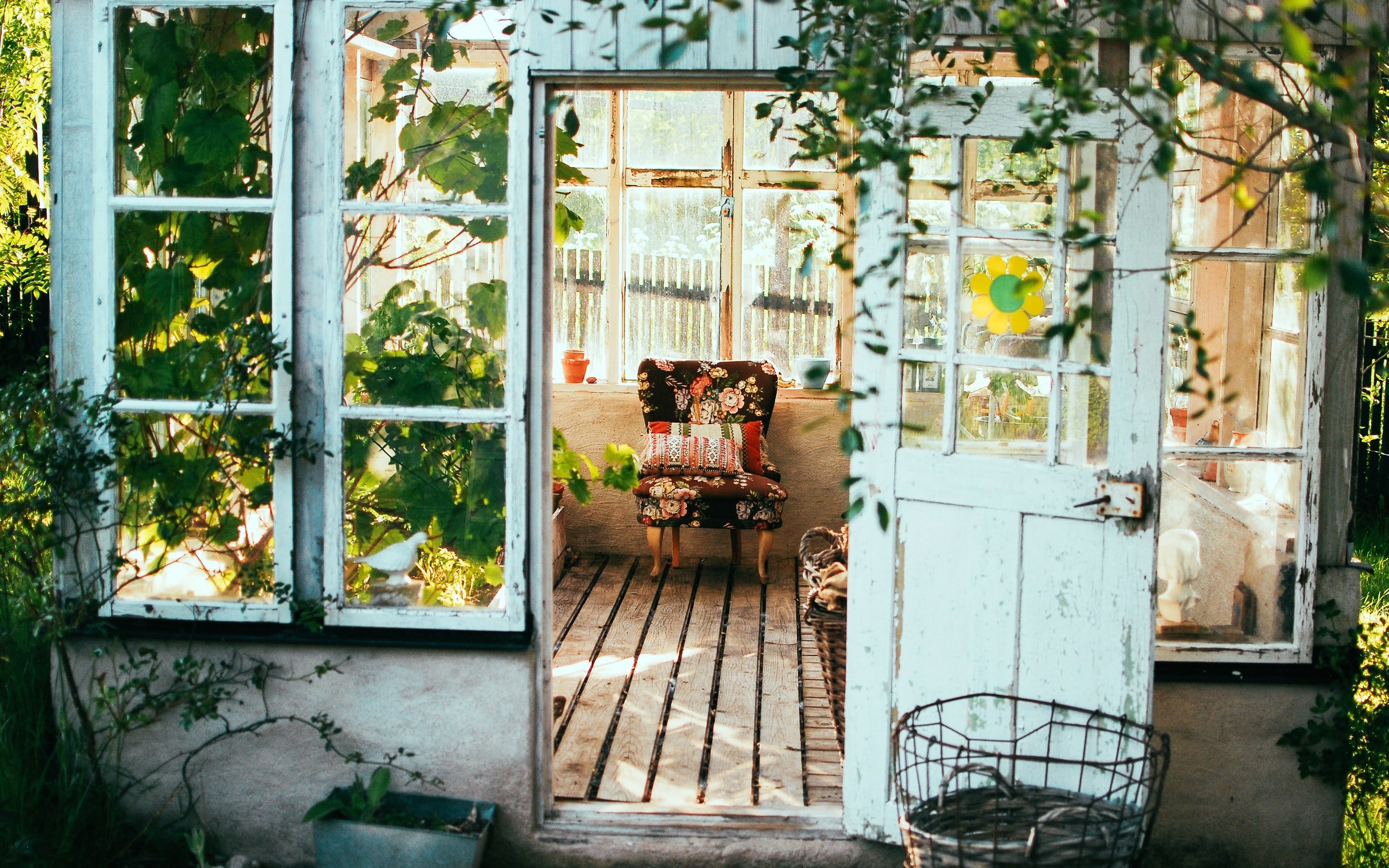The Macon Rose Garden Design
By Carol Macon
Our garden is a rose demonstration garden. In its nearly half an acre you will find over five hundred varieties of roses, from the tiniest micro-miniatures to the strongest climbers, many of them rare. The garden is on a drip system, with the exception of the lawns. Each modern rose plant, no matter how small, has its own emitter and receives two inches of water a week. The beds of modern roses are mulched to conserve moisture. The old garden roses and many of the shrubs are remarkably drought resistant, but they are mulched also. We believe in being kind to our environment, and so our roses are seldom sprayed with insecticides or fungicides. We do fertilize regularly.
Our home and garden were planned to function together. We designed the garden ourselves. Our central ideas were that we should have garden views from every window in our home, garden access from the main rooms in our home, and that the garden should be functional for entertaining. Because our Colorado garden is in bloom only six months of the year, it was essential that it have strong “bones”, large design elements and hardscaping, to insure its beauty during the rest of the year. Carol and Jerry are both American Rose Society Consulting Rosarians and rose judges and are familiar with many of the roses that are hardy in our region. We exhibit our roses at rose shows throughout the Rocky Mountains, so the roses we choose for the garden must have a good vase life. Because Carol is a rose arranger and rose arrangements judge, she chose as companion plants those that work well with roses, such as curly willow, clematis and hosta. The garden plan was completed before construction began on our home in 1992, and the subsequent implementation of the garden design required very little adjustment.
Because Carol is constantly trying new roses, the hybrid tea and floribunda bed is more like a revolving door, with older varieties being replaced by better ones, those more hardy, floriferous and disease resistant. Because garden space is limited, many of the new roses are planted in containers and set out on the driveway for a summer to be evaluated. In September, those that have made the cut are planted in the garden. In larger planters you will find tree roses and some of Carol’s favorites that are not hardy in this area. These planters are garaged for the winter, right after the first frost, and see the light of day again in April.
The hybrid tea and floribunda garden was installed during the completion of our home in 1993. In following years we added foundation plantings using old garden roses; a perennial border incorporating shrub roses; flagstone walks which were laid by Jerry; water features, Monet-style arches and two matching obelisks designed by Jerry, and a “wild” corner. Our roses usually give us five months of bloom, from mid-May to mid-October. Other flowering shrubs, bulbs, iris, clematis, peonies, phlox and daylilies contribute color in season, making our garden a haven for hummingbirds, lady bugs, and butterflies.

